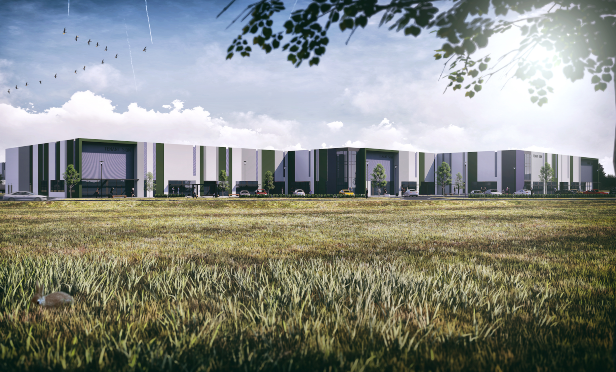 Denver's Mountain West industrial submarket is growing. Mountain Gateway has broken ground, and the new project will bring 142,000 square feet to the tight and supply-constrained market. Only 375,000 square feet of industrial product has been built in the submarket since 2000, and this is the first industrial project of its size that has been built in the last 15 years.
Denver's Mountain West industrial submarket is growing. Mountain Gateway has broken ground, and the new project will bring 142,000 square feet to the tight and supply-constrained market. Only 375,000 square feet of industrial product has been built in the submarket since 2000, and this is the first industrial project of its size that has been built in the last 15 years.
"Mountain Gateway is in our west submarket, and the mountains basically limit growth," Tyler Carner, an EVP at CBRE, tells GlobeSt.com. "So, the submarket is the most land-constrained market, and it is difficult to find any land but specifically industrial entitled land. It is a really unique opportunity to have new industrial development on the westside of town. This is one of the last remaining sites that exist."
Carner and Jeremy Ballenger are handling leasing at the property on behalf of developer Cale Enterprises. The submarket is popular, and the growing demand has outpaced new supply. "The west submarket is always a tight submarket. There is a good quality of life and a lot of decision markers live on that side of town. You also have a lot of engineering and oil and gas," Carner says. Coors has a fair amount of influence in the submarket. So, there is a fair amount of demand, and while it isn't the largest industrial submarket tin Denver, it is undersupplied with the consistent demand."
Carner expects to see the strongest interest from existing tenants in the market, many of which are occupying lower quality buildings for lack of available space. "One of the unique things about this building is that it is class-A industrial warehouse space in a market that has very little class-A space," he says. "Existing class-A tenants are currently in class-B building and paying strong rates. This opportunity give tenants the ability to switch to class-A space with little increase in rent."
In total, the space will likely accommodate a mix of four to six tenants, and Carner is already seeing strong interest from potential tenants now that the project is about six months from delivery. "We have already seen good leasing activity and interest," he says. "We have up to 142,000 square feet in two buildings, and our tenants are going to range from 10,000 to 50,000 square feet. That size tenant doesn't really start looking a year in advance, so we are just starting to get to the window where tenants of that size are starting to look."
© 2025 ALM Global, LLC, All Rights Reserved. Request academic re-use from www.copyright.com. All other uses, submit a request to [email protected]. For more information visit Asset & Logo Licensing.







